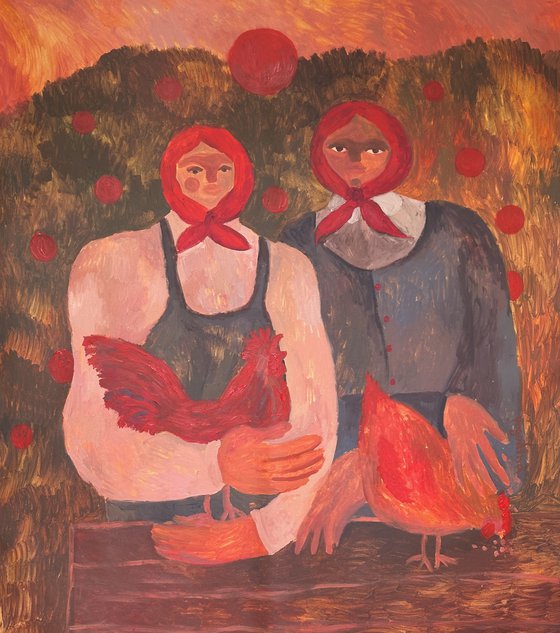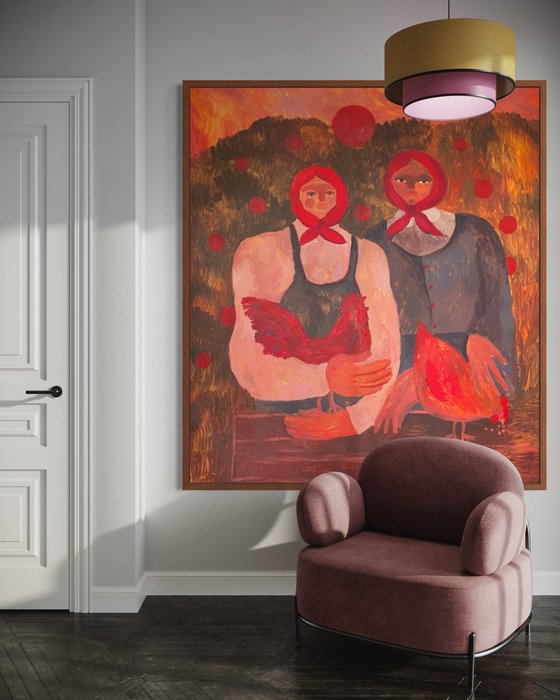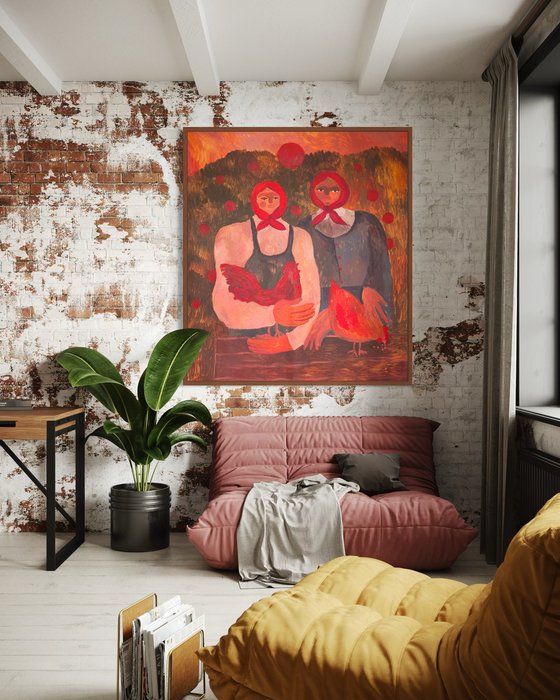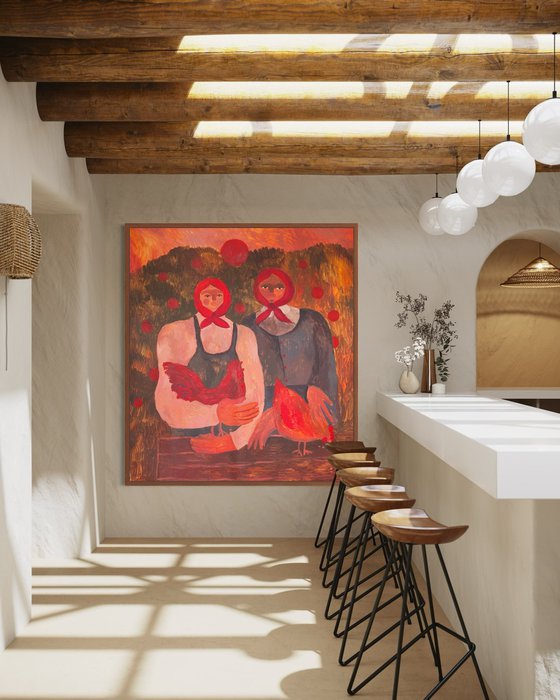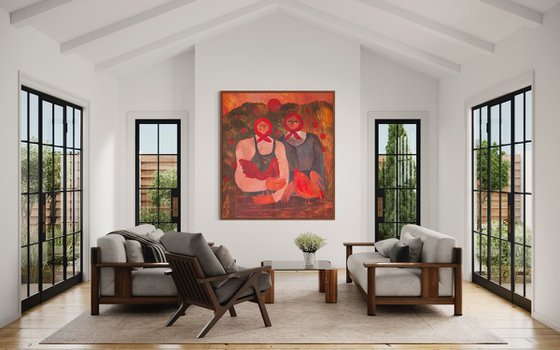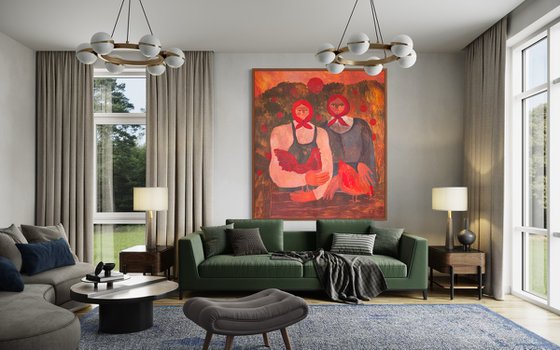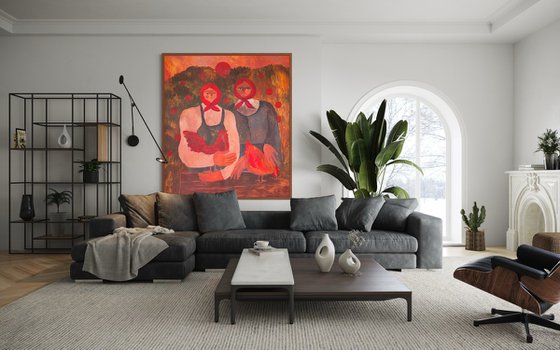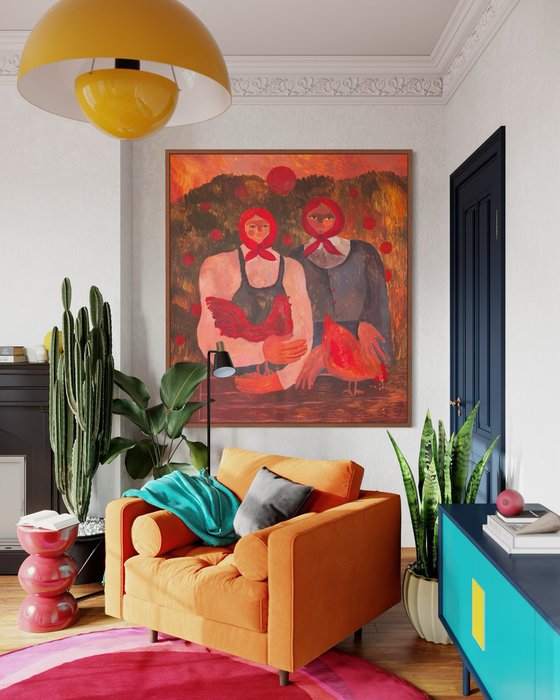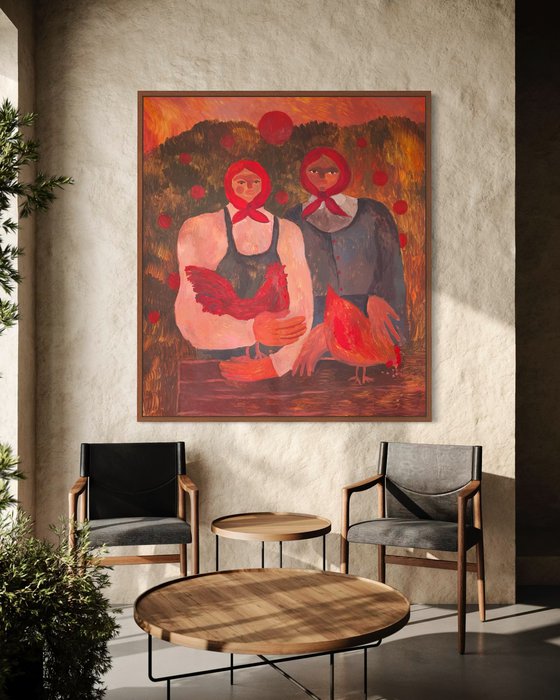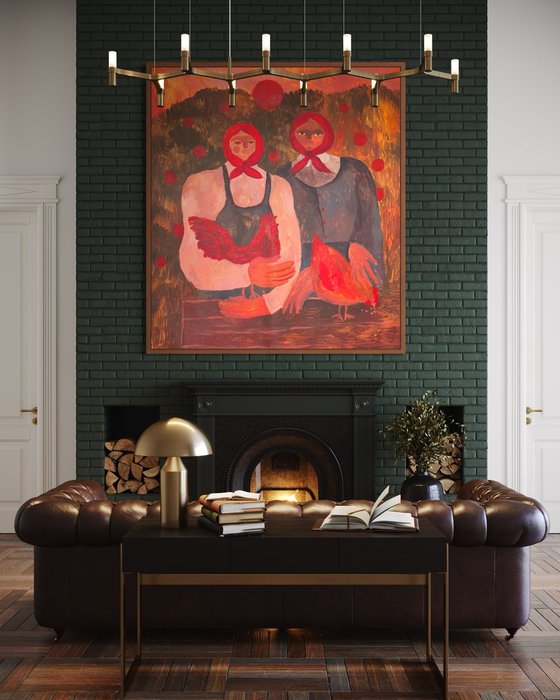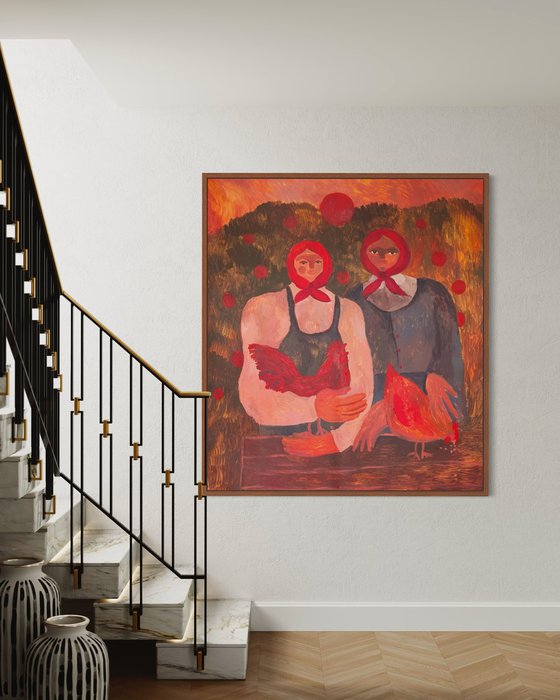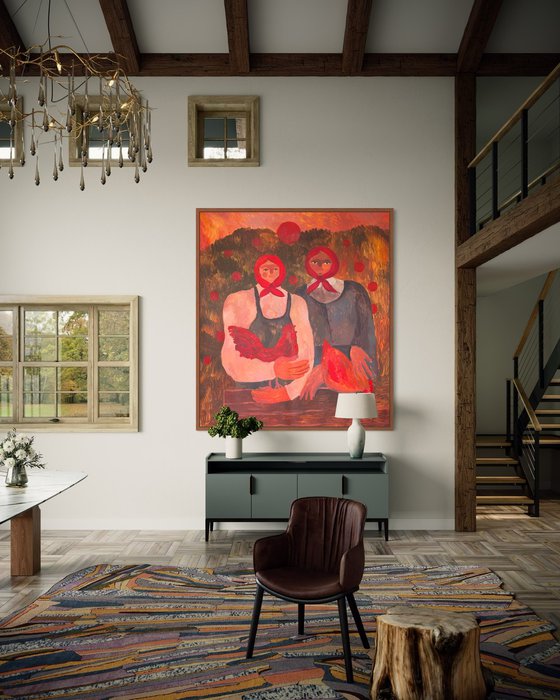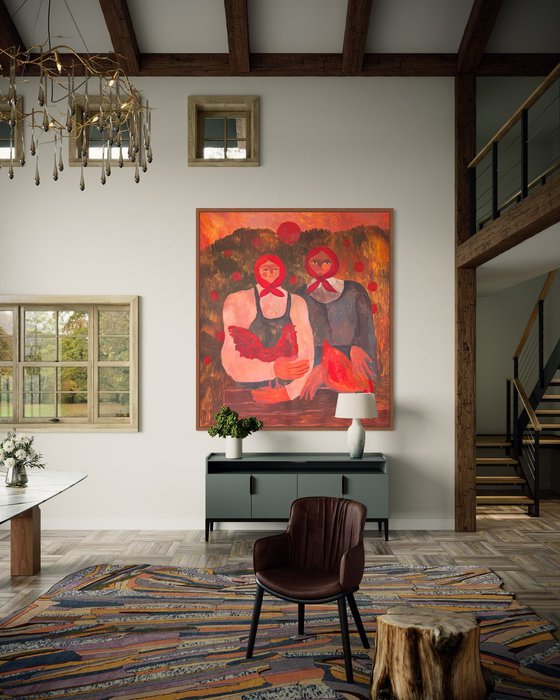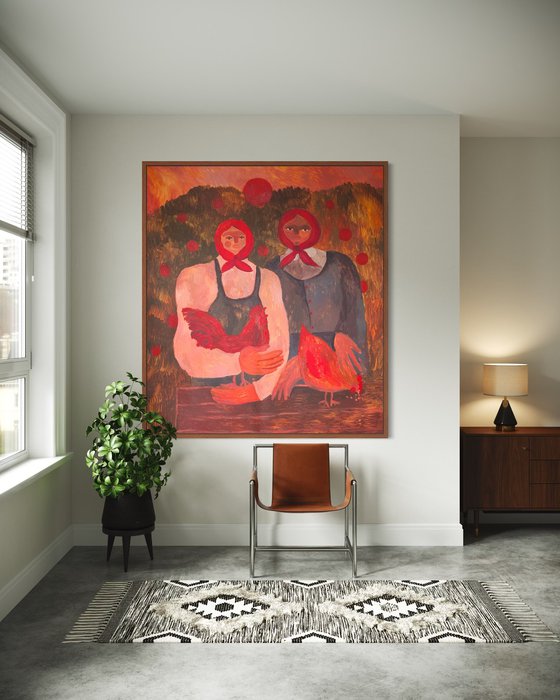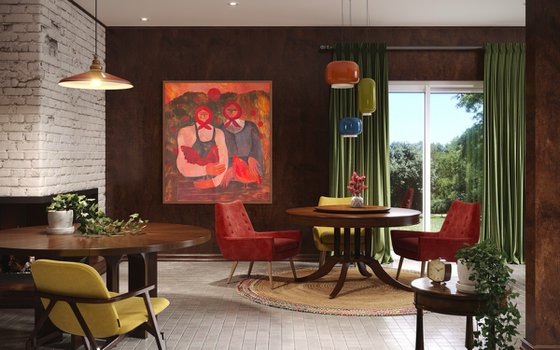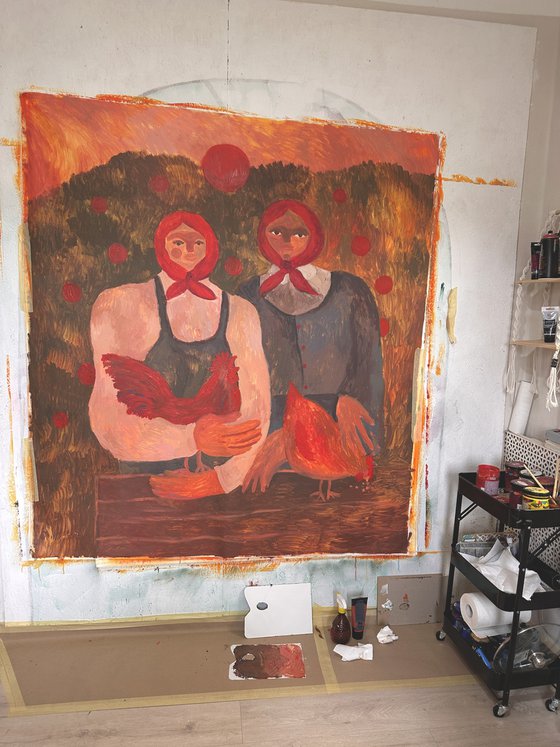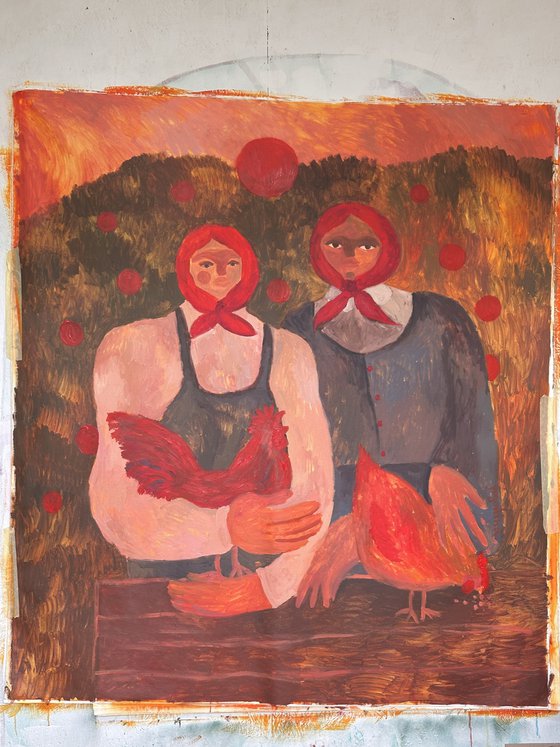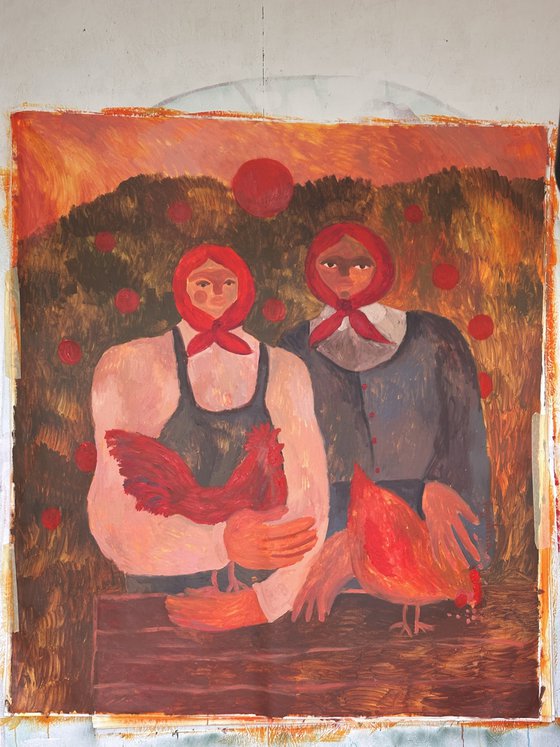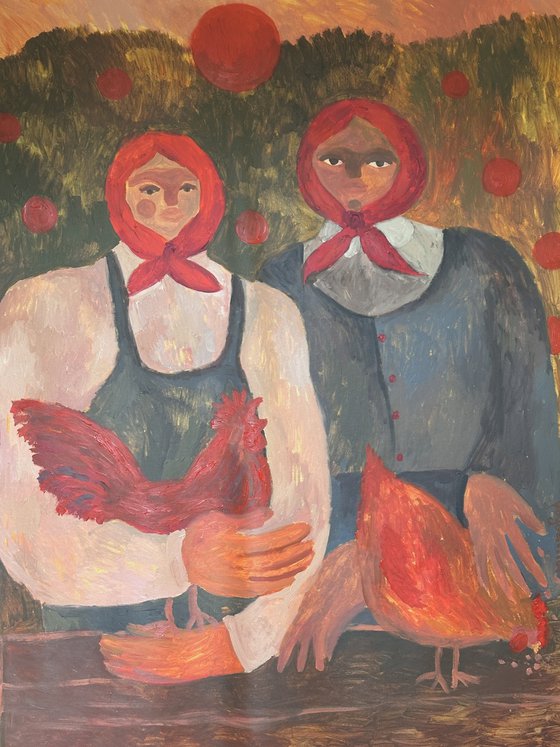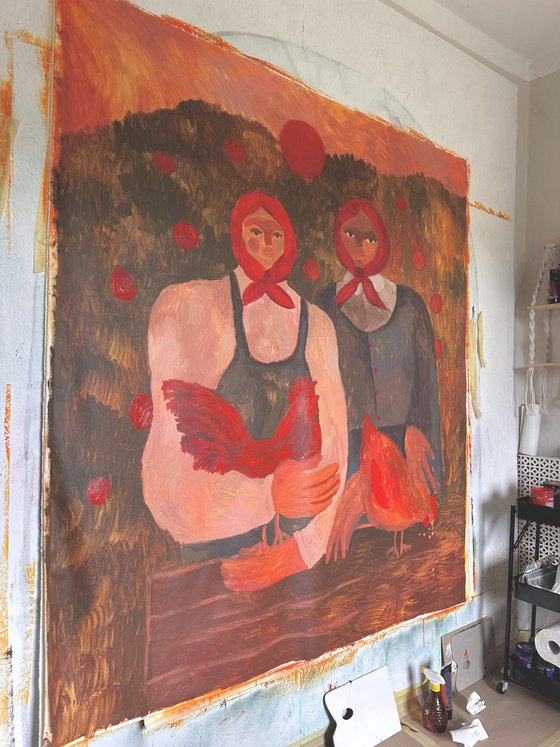Main Navigation
Original artwork description:
ABOUT THE ARTWORK
The painting "Ageless Eyes" from the MADELEINE series is a meditation on memory that does not age, on a gaze that holds centuries, and on feminine resilience passed down through generations. It is not merely an image of the past, but a symbol of its presence in the now—where faces, expressions, clothing, and gestures are not archival relics, but active forces.
The work explores how collective and embodied memory is transmitted through visual codes: the posture, the tilt of the head, the expression of the face. These women are not characters from another time, but bearers of living knowledge—of the land, of labor, of care, of resistance. Their gaze—direct, unyielding, and warm at once—looks not only backward, but forward, holding time in balance.
The painting speaks to how tradition lives in details—in fabric, in color, in gesture. But even more importantly, it shows how these details are absorbed into the unconscious, becoming inner landmarks, even when their source is no longer consciously remembered.
"Ageless Eyes" is an image of memory that does not require explanation—because it is always nearby: in a grandmother’s voice, in the movement of a hand, in the sense that you’ve seen this before—even if you never actually have. It is a gaze that sees through generations and stays with you forever.
Madeleine series
In the Madeleine series, Daria Pogodina turns to the phenomenon of involuntary memory, known in psychology and culture as the “Proust effect.” The artist explores how ordinary objects and sensory impressions from the past are transformed into emotional anchors—inner pillars of the self.
The objects and images chosen by the author—such as a mother’s sweater, childhood food, or the voice of a television announcer—become points of access to the unconscious resources of the psyche, places of comfort and stabilization. Without falling into nostalgic idealization, Pogodina captures the subtle mechanism of interaction between the conscious and the unconscious, where the mundane becomes sacred, and seemingly banal details acquire profound meaning.
These works are not about escaping the present into the past, but about seeking inner light and strength in both personal and collective experience—a testament to the human ability to find resilience in the everyday during times of crisis.
Materials used:
Acrylic
Tags:
#figurative #girl #woman artworkAgeless Eyes (2025) Acrylic painting
by Dasha Pogodina
7 Artist Reviews
£1,583.06
- Acrylic painting on Canvas
- One of a kind artwork
- Size: 150 x 180 x 2cm (unframed) / 150 x 180cm (actual image size)
- Signed on the front
- Style: Impressionistic
- Subject: People and portraits
Loading
Original artwork description
ABOUT THE ARTWORK
The painting "Ageless Eyes" from the MADELEINE series is a meditation on memory that does not age, on a gaze that holds centuries, and on feminine resilience passed down through generations. It is not merely an image of the past, but a symbol of its presence in the now—where faces, expressions, clothing, and gestures are not archival relics, but active forces.
The work explores how collective and embodied memory is transmitted through visual codes: the posture, the tilt of the head, the expression of the face. These women are not characters from another time, but bearers of living knowledge—of the land, of labor, of care, of resistance. Their gaze—direct, unyielding, and warm at once—looks not only backward, but forward, holding time in balance.
The painting speaks to how tradition lives in details—in fabric, in color, in gesture. But even more importantly, it shows how these details are absorbed into the unconscious, becoming inner landmarks, even when their source is no longer consciously remembered.
"Ageless Eyes" is an image of memory that does not require explanation—because it is always nearby: in a grandmother’s voice, in the movement of a hand, in the sense that you’ve seen this before—even if you never actually have. It is a gaze that sees through generations and stays with you forever.
Madeleine series
In the Madeleine series, Daria Pogodina turns to the phenomenon of involuntary memory, known in psychology and culture as the “Proust effect.” The artist explores how ordinary objects and sensory impressions from the past are transformed into emotional anchors—inner pillars of the self.
The objects and images chosen by the author—such as a mother’s sweater, childhood food, or the voice of a television announcer—become points of access to the unconscious resources of the psyche, places of comfort and stabilization. Without falling into nostalgic idealization, Pogodina captures the subtle mechanism of interaction between the conscious and the unconscious, where the mundane becomes sacred, and seemingly banal details acquire profound meaning.
These works are not about escaping the present into the past, but about seeking inner light and strength in both personal and collective experience—a testament to the human ability to find resilience in the everyday during times of crisis.
Materials used:
Acrylic
Tags:
#figurative #girl #woman artwork14 day money back guaranteeLearn more
